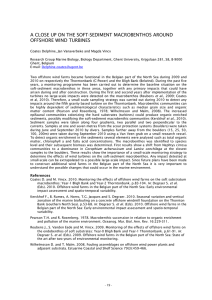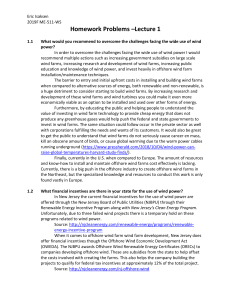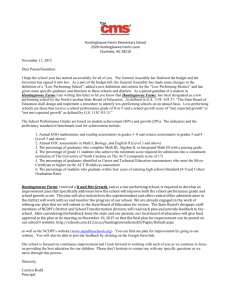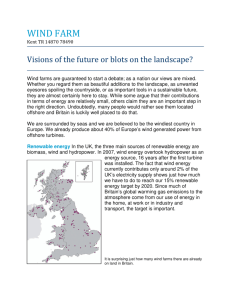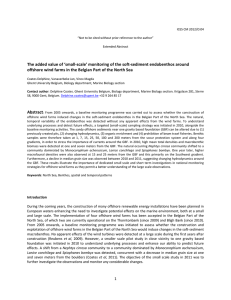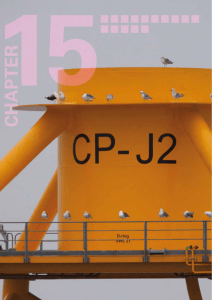The effect of the installation of offshore wind farms
advertisement
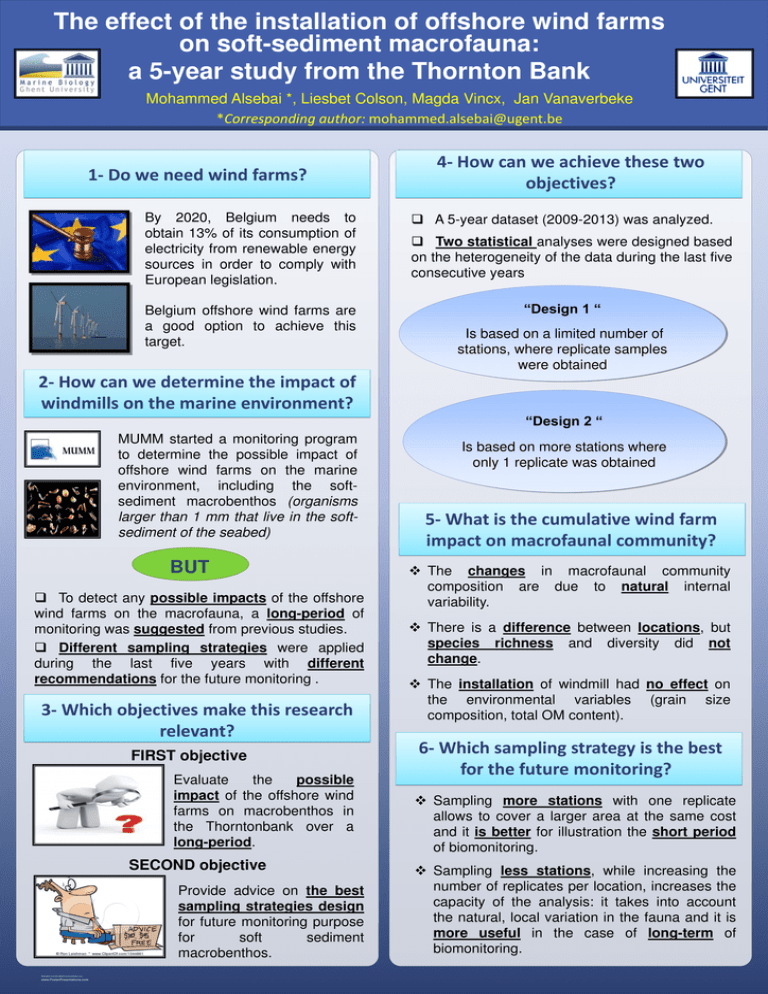
The effect of the installation of offshore wind farms on soft-sediment macrofauna: a 5-year study from the Thornton Bank Mohammed Alsebai *, Liesbet Colson, Magda Vincx, Jan Vanaverbeke *Corresponding author: mohammed.alsebai@ugent.be 1- Do we need wind farms? 4- How can we achieve these two objectives? By 2020, Belgium needs to obtain 13% of its consumption of electricity from renewable energy sources in order to comply with European legislation. A 5-year dataset (2009-2013) was analyzed. Belgium offshore wind farms are a good option to achieve this target. “Design 1 “ Two statistical analyses were designed based on the heterogeneity of the data during the last five consecutive years Is based on a limited number of stations, where replicate samples were obtained 2- How can we determine the impact of windmills on the marine environment? “Design 2 “ MUMM started a monitoring program to determine the possible impact of offshore wind farms on the marine environment, including the softsediment macrobenthos (organisms larger than 1 mm that live in the softsediment of the seabed) BUT To detect any possible impacts of the offshore wind farms on the macrofauna, a long-period of monitoring was suggested from previous studies. Different sampling strategies were applied during the last five years with different recommendations for the future monitoring . 3- Which objectives make this research relevant? FIRST objective Evaluate the possible impact of the offshore wind farms on macrobenthos in the Thorntonbank over a long-period. SECOND objective Provide advice on the best sampling strategies design for future monitoring purpose for soft sediment macrobenthos. RESEARCH POSTER PRESENTATION DESIGN © 2012 www.PosterPresentations.com Is based on more stations where only 1 replicate was obtained 5- What is the cumulative wind farm impact on macrofaunal community? The changes in macrofaunal community composition are due to natural internal variability. There is a difference between locations, but species richness and diversity did not change. The installation of windmill had no effect on the environmental variables (grain size composition, total OM content). 6- Which sampling strategy is the best for the future monitoring? Sampling more stations with one replicate allows to cover a larger area at the same cost and it is better for illustration the short period of biomonitoring. Sampling less stations, while increasing the number of replicates per location, increases the capacity of the analysis: it takes into account the natural, local variation in the fauna and it is more useful in the case of long-term of biomonitoring.
